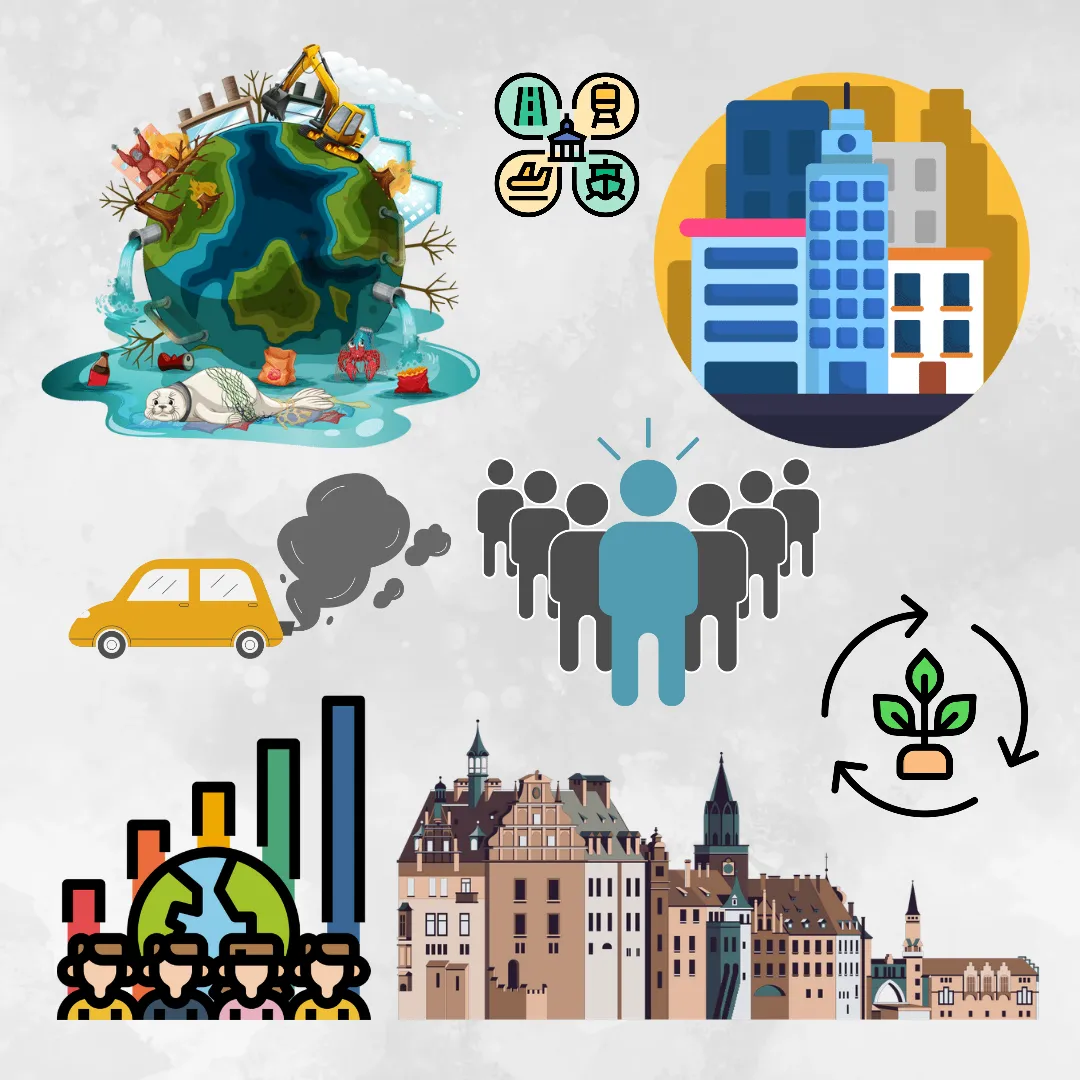Badly planned urbanization can be disastrous for big cities. We have seen how perfect-looking big cities turned into a mess after natural disasters. It affects the livability, sustainability, and functionality of urban areas. Here I will discuss some of the consequences of poorly planned urban areas.

- Inadequate infrastructure planning: Urban areas that have inadequately planned infrastructure face problems such as less economic productivity, no public safety, accidents, and other disruptions. Governments must invest in roads, bridges, sewerage systems, and proper city planning. The flooding in Dubai is a recent example as its infrastructure is designed to handle less rain, there is a lack of vegetation to absorb water and rapid urbanization and development involve extreme paving and construction. Dubai experiences an arid desert climate and not much rain is expected throughout the year but the recent heavy rain turned out disastrous. The drainage system is not made to handle a sudden influx of water. It caused lots of financial and physical damage to the people and government of Dubai.
Urban Sprawl: It is the uncontrolled expansion of cities and towns to accommodate rising urban populations and increase in the construction of residential areas. Its consequences include increase in energy use, a rise in pollution, environmental degradation and traffic congestion.
Lack of greenery: Most of the cities has less green areas which includes parks and green spaces which can have positive effects on mental well being of population living there. Lack of greenery also contributes to the increase in heat and poor air quality. Greenery stops landsliding and absorbs greenhouse gases.
Over population: As more people are moving to urban areas it is causing over crowding, which is causing shortage of resources, infrastructure and more pollution. Everyday more and more people are moving towards urban areas in search of better living standing and more job opportunities but it is effecting negatively.
Shortage of housing: Even though construction of residential places in urban areas is increasing still it can't cope with increasing population due to people moving towards urban settlements.
Traffic congestion: Traffic congestion is increasing at alarming rate. More people are moving to urban areas thus increased car owner ship. People travel by their own transportation to work everyday increasing traffic congestion and higher level of vehicle pollution in the environment.
Environment degradation: Urban sprawl is the reason of destruction of natural habitat of a place. More construction causes lose of agricultural land and increasing in the level of pollution caused by urbanization.
Health issues: Urbanization destroys the environment and more harmful gases are released in our environment. It is the cause of destruction of respiratory system. The dense population and higher level of pollution in urban areas causes the diseases to spread faster.
Class system: Social division can be unequal and unfair. Wealthier communities may have access to better facilities, and amenities as compared to poor communities. Social division is very obvious.
Increased crime rates: Unfair social division can cause higher crime rates in urban areas. As poorer has less opportunities and wages are less for small jobs.
Conclusion:
Urbanization is the need of the time. People want better life opportunities and better jobs which causes urban sprawl. If people are provided all these facilities in their own areas there would be no more increase in population of unban areas causing less damage to resources and environment. Governments need to plan keeping all these issues in mind to solve this issue of unplanned urbanization.
This post is an entry to May Inleo - Monthly Prompts. If you are interested the you can also submit a post from InLeo on a daily theme. See the source for more information!